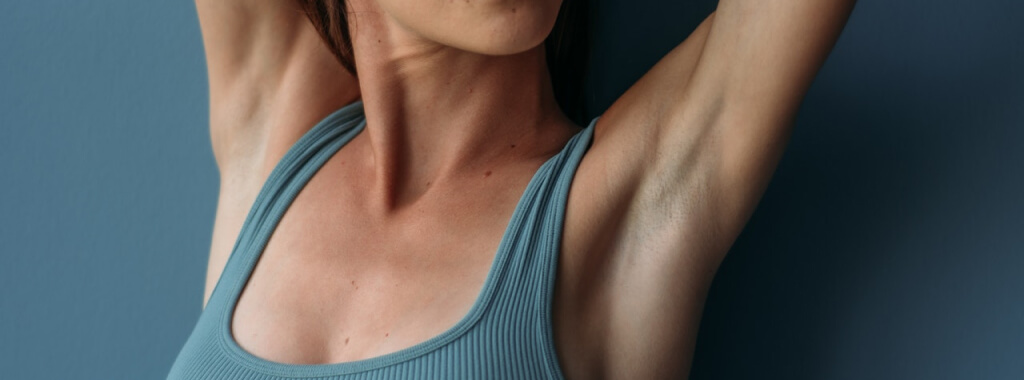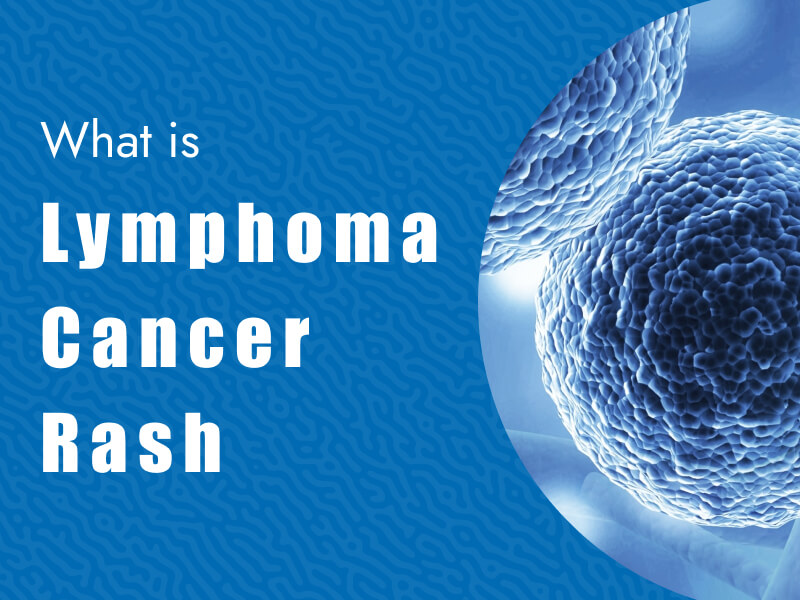Lymphoma rash is a variety of rashes and wheals that occur as a result of this disease. Lymphoma rashes do not have a specific form. There are many types of this disease and each type can present differently.
Lymphoma rash is a term that often causes confusion among patients and caregivers alike. Contrary to common belief, not all rashes associated with lymphoma are indicative of the disease manifesting in the skin, nor do they always signal the presence of skin lymphoma. These rashes can vary in appearance, ranging from red patches to itchy, scaly areas, and they might appear anywhere on the body. The diagnosis and significance of a lymphoma rash depend on various factors, including the lymphoma type, its stage, and the individual’s overall health. It’s essential for healthcare professionals to carefully evaluate such symptoms to determine their cause and the best course of action.
It is important to mention that skin lymphoma is not a type of skin cancer. Similarly, lymphoma that first starts in the lymph nodes before spreading to the skin is not a skin lymphoma. Other non-Hodgkin’s lymphoma symptoms in patients other than rashes can be swollen lymph nodes, fever, night sweats, fatigue, weight loss, and more. Rashes are most common in lymphomas of the skin but are also sometimes seen in other subtypes of lymphoma.
What Does a Lymphoma Rash Look Like?
Lymphoma rash symptoms and appearance depend on what type of lymphoma the patient has and where on the body the rash occurs. The two main types of CTCL that cause rashes are mycosis fungoides (MF) and Sezary syndrome (SS).
Mycosis Fungiodes (MF): MF accounts for roughly half of all skin lymphomas and is an indolent type of cancer that grows slowly over time. The first sign of MF is a rash on the skin that can look the same for years, most often beginning on a part of the body that does not get much direct sunlight. In addition to rashes, MF can develop raised tumors in the skin that look similar to mushrooms.
Once a rash is finished developing, patches of flat and scaly skin may be found in one or more places around the body. Or, some younger patients will instead find light spots on the skin around the body. In advanced stages, itchy patches of skin that is raised and thick can also appear, these are called plaques. If the cancer is still not treated properly, additional patches, plaque, and tumors can appear over time on the skin.
Sezary Syndrome (SS): SS is not as common as MF, but is usually more severe. SS not only causes rashes to the skin, but also impacts the blood. Many patients with SS experience redness and swelling throughout the body. Some of the skin may eventually have peeling, thickening of the palms and soles, droopy eyelids, hair loss, thickened fingernails or toenails, and more.
Some patients experience skin conditions that result in patches similar to eczema, called erythroderma. These patches can affect a specific area of the body, presenting as red, dry, and itchy, much like a severe sunburn. In certain cases, these patches may harden, leading to the formation of itchy plaques. While not covering the entire body, they can be widespread. For severe cases, treatments like a stem cell transplant may be considered.
When either of the cutaneous lymphomas progresses, the rash may spread further around the body in more frequent patches. As the rashes advance, papules may develop, which are raised bumps on the skin that can eventually develop into tumors or nodules.
How Does a Lymphoma Rash Start?
Lymphoma begins developing in cells called lymphocytes located in the skin and blood that are part of the immune system. The lymphocytes become irritated until the skin appears red and dry, leading patients to itch the surrounding area.
Also, Cytokines are chemicals that the body releases to fight cancer cells, which cause itching of the skin. Itching is the first symptom that most patients with CTCL will experience. Itching can occur without a rash being present. In the context of cancer treatments, it’s important to note that treatment include various approaches depending on the specific type of cancer. For instance, a cancer skin rash, such as one associated with lymphoma, requires targeted therapies. Similarly, a liver cancer skin rast might indicate a different treatment strategy. Generally, a cancer rash is a common symptom where the skin rash becomes an important diagnostic indicator. These rashes, often a key symptom of underlying conditions, necessitate specialized care and treatment plans.
Treatment strategies for lymphoma, particularly cutaneous T cell lymphoma like mycosis fungoides, require a multi-faceted approach. Cancer treatments for skin lymphoma may include localized therapies such as radiation, systemic medications to target cancer cells, and sometimes more innovative treatments like immunotherapy or targeted therapy. Each treatment option aims to manage the disease and alleviate symptoms, focusing on the patient’s quality of life. For instance, mycosis fungoides, an early manifestation of cutaneous T-cell lymphoma, illustrates the necessity of recognizing and treating skin changes promptly to prevent progression to more advanced stages.
In the realm of lymphoma and its complications, conditions like meningitis can also emerge, particularly in later stages or as a side effect of certain treatments. Early stage lymphoma, if diagnosed and treated timely, offers a better prognosis and may prevent the development of severe complications.
Where Does a Lymphoma Rash Appear?
For those concerned with where does a lymphoma rash appear, rashes can appear almost anywhere on the body. The location typically will depend on where the lymphoma starts to develop in the body. Depending on where the rash is, it can lead to some different symptoms. Below are some of the most common locations for rashes in non-Hodgkin’s lymphoma:
Lymphoma Rash on Chest
The chest and torso are some of the most common places for patients to first discover rashes due to the lack of direct sunlight in some patients. Especially in early stages, many patients will have some form of rash develop here in both MF and SS.
Lymphoma Rash on Face
Although the face is common for patches of hardened skin that itches and ulcerates in both MF and SS, the face does not typically get red and dry patches of skin. Overtime, bumps may appear on top of the facial rash as it progresses.
Lymphoma Armpit Rash
Rashes can occur in the armpit if MF is present since not much sunlight is directed to the armpits. This area of skin can also be affected by SS with red and itchy patches of skin on the arms and armpits.
Lymphoma Rash on Neck
Due to the amount of skin folds on the neck, many patches of irritated skin will look like eczema. The neck is often red, dry, and itchy and may lead to the lymphoma spreading to nearby lymph nodes if not treated in both MF and SS.
Unlike leukemia, Non-Hodgkin’s lymphoma affects the lymphatic system and can present through swollen lymph nodes, weight loss, and night sweats. Among its subtypes, immunoblastic T-cell lymphoma is notable for its aggressive nature and the need for prompt, targeted treatment.
Cutaneous T-cell lymphoma (CTCL), another subtype of Non-Hodgkin’s lymphoma, manifests directly on the skin, presenting unique challenges in diagnosis and management. Its symptoms can closely resemble common dermatological conditions, making early recognition pivotal. The treatment strategies for blood cancers, including CTCL and immunoblastic T-cell lymphoma, are diverse. Treatment include chemotherapy, radiation therapy, immunotherapy, and, in some cases, stem cell transplantation. Each approach is tailored to the patient’s specific type and stage of cancer, aiming to eradicate cancer cells, control symptoms, and extend survival.
The journey of treating blood cancers is complex and multifaceted. From recognizing the initial symptoms to navigating the array of treatment options, patients and healthcare providers must work closely to devise the most effective treatment plans. Advances in medical science continue to offer hope, improvin

Does Skin Lymphoma Rash Come and Go?
Navigating the landscape of skin conditions related to cancer and its treatments presents a complex challenge for both patients and medical professionals. These conditions can manifest across any area of the body, often serving as a visual cue to underlying health issues. One of the most potent options in the arsenal against severe cancer cases, especially blood-related cancers, is a stem cell transplant. This procedure can offer a chance for remission or significantly extend survival but comes with its own set of challenges, including the risk of graft-versus-host disease, which can lead to severe skin conditions.
Once a lymphoma rash develops, they can be difficult to relieve. If the symptoms are not managed properly, the lymphoma can progress and spread to other parts of the body. However, many patients can relieve their symptoms with proper treatment and prevent the cancer from progressing.
When caught in early stages, T-cell skin lymphoma is often treatable. Treatments for these skin lymphomas often include:
- Injection directly to the tumor site
- Phototherapy
- Gels
- Ointments
These early-stage treatments help control the itchiness of the skin, limit any pain, clear the rash, and help slow the progression of the cancer. Once the cancer is no longer in the early stages, patients are typically given a combination of:
Chemotherapy drugs such as methotrexate
- Photopheresis, an immunotherapy that irradiates cancer cells with wavelengths outside of the body before infusing the cells back in the body.
- Medications such as bexarotene or interferons
When in advanced stages, it is more difficult to treat the disease, so common treatment options include immunotherapy, chemotherapy that is taken orally or injected, and targeted therapies.
Clinical Trials for Lymphoma
Many patients with advanced or late-stage cancer turn to clinical trials for new therapies. Before new trials are approved by the FDA and are widely used, several phases of clinical trials are held to ensure the drugs are both safe for patients and effective at treating the disease.
Lymphoma clinical trials are also available for patients of all stages. Cancer clinical trials offer the latest drugs in cancer research that target the genetic makeup of a tumor, which can lead to less side effects and improved outcomes from therapies.In the realm of cancer treatments, advancements are continuously being made, especially through clinical trials. These trials are crucial for developing new therapies, including those for blood cancer. One significant focus of these trials is the treatment of cancer rash and skin rash, which are common symptoms in various cancer types. A key part of treatment include innovative methods like stem cell transplant, which has shown promise in treating certain cancers. Additionally, cancer clinical trials often explore targeted therapies that address the genetic aspects of tumors, aiming for more effective results and fewer side effects.





4 Comments
Please I need somebody to direct me the medication I will use to treat my arms iches because is too much on me now
Hi Chukwu. There are medications to help with the itching. Please reach out for your doctor as they will be able to recommend the appropriate intervention for you.
Can a lymphoma rash appear on both armpits, towards front of armpit and also in middle front of my neck? I have Kappa/Lambda light chains test with below normal values for each but a ratio of 165–could this also point to lymphoma? Thank you-I am 69 yr old female with other symptoms. I appreciate any guidance.
Hi Janet,
Thanks for your message, we are sorry to hear about your diagnosis. You can contact one of our Patient Relations Coordinators via phone or email at 844-627-7246 & support@massivebio.com.